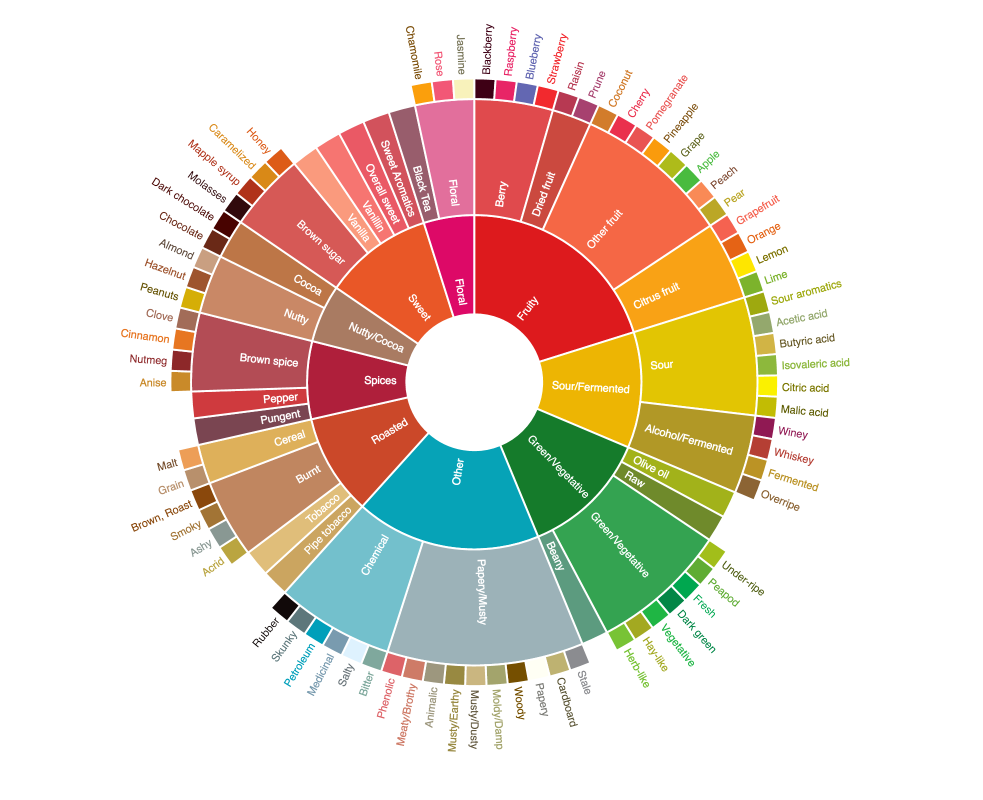Resources
Coffee Processes
Washed
Washed coffee, also known as wet processed coffee, involves removing the cherry from the bean before drying. The cherries are typically mechanically de-pulped, then the remaining pectin is fermented and washed away. This process results in a clean and bright taste, with less fruity or fermented flavors. The washed coffee process is widely used in regions with access to ample water resources, as it requires a significant amount of water to wash away the remaining pulp and pectin. This process can also be more labor-intensive, as it involves more steps and careful monitoring of the fermentation process. Washed coffee is often favored by specialty coffee roasters and connoisseurs for its clarity and acidity, as well as its ability to showcase unique flavor notes from the coffee's origin. However, this process can also result in a loss of some of the natural sweetness and body of the coffee, as the fruit sugars are removed during processing. Overall, the washed coffee process is one of the most common and widely used methods for producing high-quality specialty coffee.
Natural
Natural Process, also known as "dry process," is a method of processing coffee cherries where the whole fruit is dried in the sun without the use of water or machines to remove the fruit. This method is one of the oldest ways of processing coffee and is still used in many regions around the world, particularly in countries such as Ethiopia, Brazil, and Yemen.
The process begins with harvesting ripe coffee cherries from the tree. After harvesting, the cherries are sorted to remove any under-ripe or overripe fruit. The sorted cherries are then spread out to dry in the sun. The cherries are turned regularly to ensure even drying. During the drying process, the coffee cherries lose moisture and the fruit begins to shrink, eventually exposing the green coffee bean inside. Once the cherries are dried, they are hulled to remove the dried fruit and reveal the green coffee beans. The green beans are then sorted and graded based on their size, shape, and quality.
Natural Processed coffees are known for their bold and fruity flavors with a heavier body and a distinct sweetness. When executed correctly, natural processed coffees can be of exceptional quality and offer a unique taste profile.
Honey
Honey process, also known as pulped natural process, is a coffee processing method that combines elements of both the washed and natural processing methods. In this method, ripe coffee cherries are picked and then de-pulped, which removes the skin from the cherries. In the honey process, the sticky mucilage or honey-like substance that covers the coffee bean is left intact. The coffee beans are then dried with the sticky layer still attached.
The result is often a coffee with a fuller body and sweeter, fruitier flavor notes.
Termico Natural
The Termico process is a new, experimental coffee process invented by Luis Campos of Cordillera de Fuego. The process starts with cherries picked at their ripest, allowing them to have a high sugar content and thus feeding the Termico process. The semi-washed coffee is then heated with some of the coffee mucilage left on the bean. The exposure to the heat starts to breakdown the natural sugars of the coffee cherries, partially caramelizing them. This inventive process gives the coffee an exceptionally sweet and fruity flavor as well as a round and balanced cup.
Decaffeinated
The decaffeination process involves immersing the beans in water for expansion and preparation for caffeine extraction. They are transferred into a solvent which has natural compounds that bond with the caffeine, thus extracting it from the beans. Commonly used solvents include ethyl acetate, swiss water, benzene, and carbon dioxide.

Tasting Coffee
Have you ever purchased coffee based on delicious flavor notes—blueberry, semisweet chocolate, hazelnut—only to taste none of that in your cup? It’s a common experience among coffee lovers. But with a little knowledge, a little practice, and the ability to slow down and savor, you really can find those flavors in your coffee.
Next time you brew a cup, use this tasting wheel to help you find the flavors you're experiencing. After awhile, you'll be able to pinpoint the sweetness, body, acidity, flavors, and the finish.
Need help building your taste vocabulary? Lets chat about it!
Cultivars//Coffee Species
Catuai
Catuai is a high-yield Arabica cultivar that was developed in Campinas, Brazil in the 1950s and 1960s. It is a hybrid of Mundo Novo and Caturra, and is widely used in Brazil and Central America.
It is a popular variety for its high yields and resistance to disease, as well as its good cup quality. It is a versatile variety that can be grown in a variety of climates and soils.
Caturra
Caturra is an Arabica cultivar of coffee that was discovered in Brazil in 1937. It is a natural mutation of the Bourbon variety, and is known for its good yield potential. It is a popular variety in Colombia and Central America, and is known for its good cup characteristics.
At higher altitudes, the quality of Caturra coffee increases, but production decreases. It is a variety that requires extensive care and fertilization in order to produce the best results.
Lempira
The Lempira plant is a hybrid of the Caturra and Catuai varieties. It is a valuable variety for farmers in Honduras, as it is a high-yielding variety that is well-suited to the climate and soil conditions of the country. It is also a valuable variety for coffee roasters, as it produces a good cup quality.
Wolisho
The Wolisho coffee varietal is an ancient variety of coffee that is native to the highlands of Ethiopia. It is also known as the Welicho variety. It is a wild coffee variety that is believed to have been growing in the region for centuries.The Wolisho variety is a low-yielding variety, meaning that it produces fewer coffee cherries than other varieties. This makes it a less popular choice for commercial coffee production. However, it is highly sought after by specialty coffee producers due to its unique characteristics.
Dega
The Dega coffee varietal is an ancient Ethiopian variety that is cultivated throughout the country. It is believed to have been around for centuries, and is one of the oldest varieties of coffee in the world. It is a unique variety that is known for its distinctive characteristics and flavor profile.
The Dega variety is a low-yielding variety, meaning that it produces fewer coffee beans than other varieties. This makes it a rare and sought-after variety, as it is not widely available. It is also known for its high quality, as it is grown in the ideal conditions of the Misty Valley (Yirgacheffe).
Typica
Typica is one of the main cultivars of Arabica, and one from which many other commercial types have been derived. It is known for its low production and good cup quality. It is also a popular choice for farmers due to its resistance to disease and pests.
Castillo
The Castillo coffee varietal is a hybrid variety of coffee that was developed over five generations in Colombia. It is a cross between the Caturra and Colombia varieties, and was created with the intention of providing resistance to leaf rust. It is a “dwarfed” tree, meaning that it is smaller than other varieties, and can be planted in high density, resulting in generous crop yields.
Arabica or Robusta?
-

Arabica
Coffea Arabica is a species of flowering plant in the Rubiaceae family, native to the southwestern highlands of Ethiopia. It is the most widely cultivated species of coffee in the world, accounting for around 75% of the world’s coffee crop. Arabica coffee is a woody perennial evergreen that grows to a height of up to 10 meters, with a trunk diameter of up to 30 cm. The leaves are dark green, glossy, and oval-shaped, with a pointed tip. The flowers are white and fragrant, and the fruit is a red cherry. Coffea Arabica is a tetraploid species, meaning it has 44 chromosomes, and is self-pollinating.
Arabica is dramatically superior in cup quality to the other principal coffee species, Robusta. All fine, specialty, and high-grade coffees come from Coffea Arabica trees.
-

Robusta
Coffea Robusta is one of the two main species of coffee beans, the other being Arabica. Robusta is responsible for roughly 25% of the world's commercial coffee production and is grown in many countries around the world. Robusta beans are known for their higher caffeine content, which is about twice that of Arabica beans. It is often used in espresso blending to increase body and crema content. It is also used in instant coffee and other commercial coffee blends. Robusta beans are usually less expensive than Arabica beans, making them a popular choice for commercial coffee production. Robusta beans are usually smaller and rounder than Arabica beans, and they have a higher oil content. They also have a higher acidity and bitterness than Arabica beans, which makes them less desirable for specialty coffee production.
Brew Guides

Batch Brew
Coffee + 60g
Water + 1,000g
Grinder + Medium
Brew time + 5 minutes

Moka Pot
Coffee + 18g
Water + 200g
Grinder + Extra fine
Brew time + 5 1/2 minutes

V6O
Coffee + 13g
Water + 220g
Grinder + Medium
Brew time + 2 minutes

Chemex
Coffee + 25g
Water + 340g
Grinder + Medium
Brew time + 2 1/2 minutes

French Press
Coffee + 30g
Water + 350g
Grinder + Course
Brew time + 4 minutes

AeroPress
Coffee + 15g
Water + 240g
Grinder + Fine
Brew time + 2 minutes

